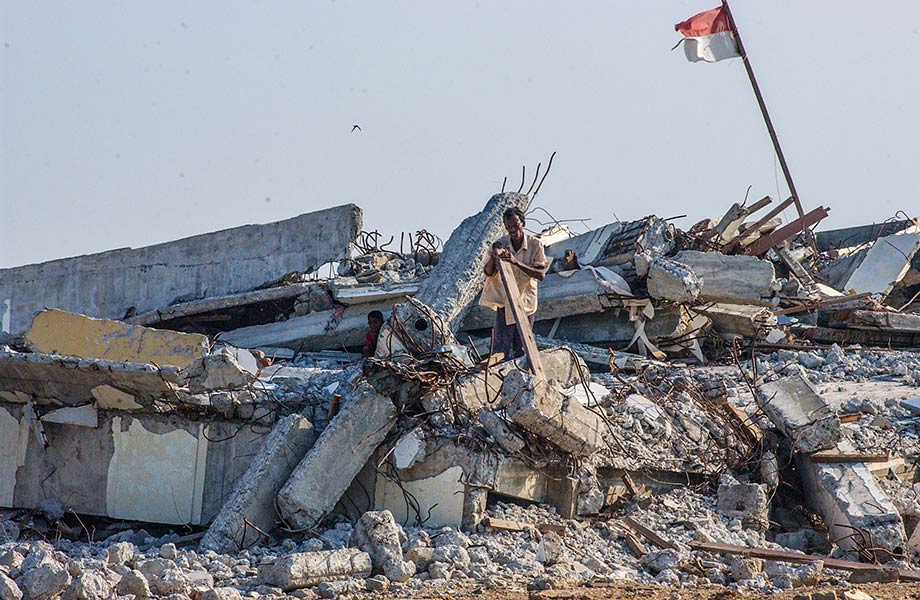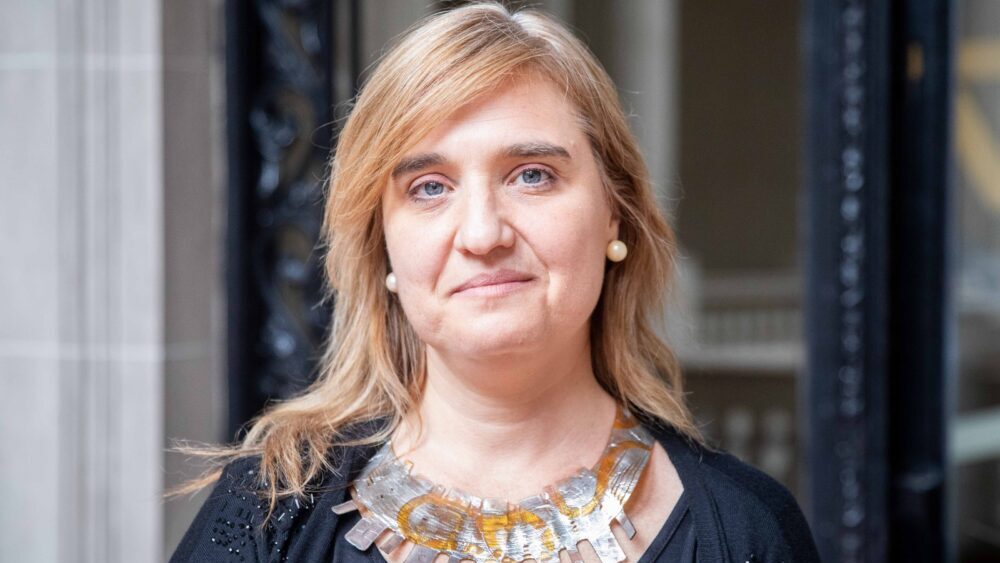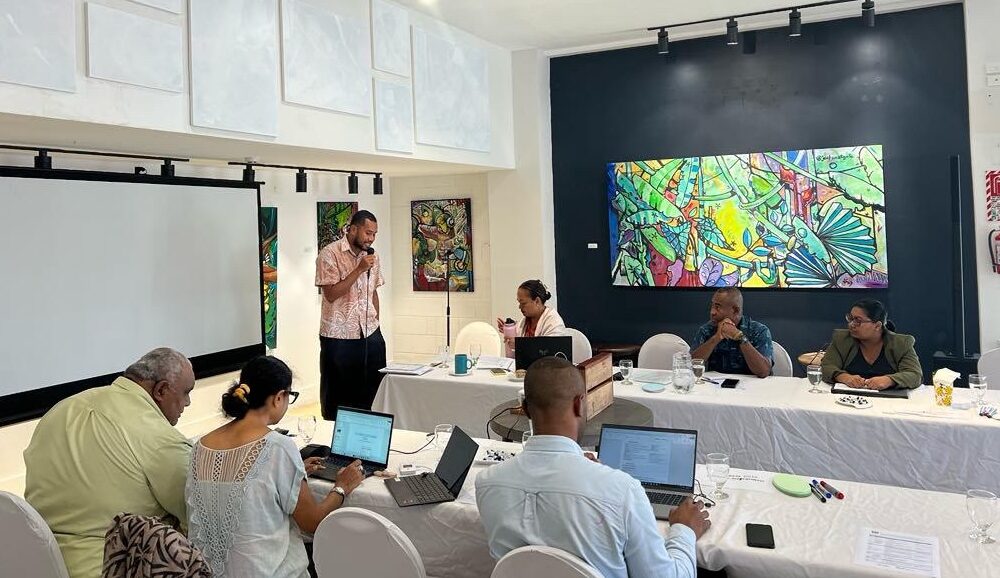Atle Solberg: My name is Atle Solberg, I work for the Platform on Disaster Displacement. The objective of the Platform on Disaster Displacement is to follow-up on the work started by the Nansen Initiative, and to implement the recommendations of the Protection Agenda – a toolbox to better prevent and prepare for displacement and to respond to situations when people are forced to find refuge, within their own country or across the borders.
Cameron Thibos (oD): What do we mean by climate and disaster forced migration and displacement? How does that distinguish between other types of forced migrants?
Atle: Within the climate change negotiations they have talked about three types of human mobility that may be caused by or linked to climate change. One is migration, which is predominantly voluntary. There are also examples of displacement, which are predominantly forced. And then you have planned relocation.
The displacement risk linked to disaster has doubled in the last 20-30 years.
That is one way of looking at it. We talk about disaster displacement, and by that we are talking about people who are forced or obliged to flee because of disasters caused by natural hazards. These could be hurricanes or tropical storms, but there is also the slow onset of events like rising sea levels or desertification. When we refer to disaster, we are talking about disasters caused by natural hazards: geophysical, metrological, or climatological. We are not talking about man-made disasters, or those that may be linked to conflict.
Cameron: How do the protection needs differ for those displaced by natural disasters and climate change, as opposed to other types of forced migrants – for example refugees of war?
Atle: In general terms, everyone who is forcibly displaced would normally have immediate and specific protection needs linked to their displacement. Those will often be similar, and in that sense they don’t always differ. People forcibly displaced will very often be separated from their family, and they may have lost their house or belongings. People may be injured and in need of medical assistance.
Some categories of people are more vulnerable than others in displacement, such as women and children, and people might not be able to return because their home is destroyed or it is too dangerous. So it’s not that their protection needs are necessarily very different. They might be quite similar regardless of whether you are forcibly displaced because of skirmishes due to an armed conflict, because of an earthquake, or if you must be evacuated to avoid a hazard.
Duration: 1:12
What is particular for those displaced across international borders by disaster or climate change is that there is very little policy and normative frameworks guiding how states should treat them. The question of admission is a good example. There is very little guidance or obligation for states to admit people, even though they may be in need of protection and assistance and may need to go to another country.
Cameron: Unlike for some of the other reasons for why people take flight, we are already well aware that climate change is happening and we have a good sense of what some of the ramifications might be. So how are we able to be pro-active on this issue? How can we get ahead of events, so relief organisations aren’t perpetually airlifting in aid after the fact?
Atle: The question requires a comprehensive answer. We have to be better prepared in order to reduce the risk that we know will increase. We know that displacement risk linked to disaster has doubled in the last 20-30 years. This hasn’t necessarily happened because the climate or the weather has become more violent or more damaging. It’s also because the decisions made by humans have put more people at risk of displacement.
The adverse effects of climate change are already there. It’s a reality we can already see in coastal areas, and in small island developing states.
Two such decisions are urban settlement in areas at risk of disaster, and densely populated cities without proper building codes. Environmental degradation is also undermining livelihoods. So to be prepared for the adverse affect of climate change, we need to scale up our efforts to reduce risks, including the risk of displacement.
We also need to scale up our adaptation efforts. The adverse effects of climate change are already there. It’s a reality we can already see in coastal areas, and in small island developing states. They – and we – need to scale up our capacity to adapt to those adverse effects.
Thirdly, if efforts related to reducing risk, adapting to climate change, and building better human settlements – basically getting on a better development path – if all that fails, more people will likely be displaced. Thus we have to build up our policy tools so that we can better deal with those who are displaced either internally within their countries or across borders.
Cameron: Often it is assumed that people who are displaced will eventually go back to where they came from. But with things like desertification or rising sea levels, we’re talking about foreseen permanent migration away from inhabitable areas. Thus do we also need an entirely different perspective when designing these new policies?
Atle: That’s a very good point. Recently we were in the International Organisation for Migration’s governing council, and the president of the United Nations General Assembly said it very bluntly. He said that ‘if your traditional land is becoming a desert, you have to move. If your traditional rice delta is one metre below sea level, you have to move’.
Some people will have to move, and unfortunately that movement is likely to be permanent. That means either a permanent solution within your own country, or in extreme cases a permanent solution outside your country. That touches on fundamental, and tricky, issues such as sovereignty, citizenship, cultural rights and access to another country. As mentioned, there is very little in international law that actually puts an obligation on states to admit another country’s citizen into their territory.
Cameron: Are there any examples today of countries being pro-active because they are especially at risk?
Atle: I think that every country vulnerable to disaster risks or the adverse effects of climate change are preparing and are doing their best to adapt and reduce the risk. There are some countries that are well-prepared to deal with and seek to reduce the risks of even the most ferocious hurricanes. Countries are building up their capacity.
In 2015 the UN General Assembly adopted the Sendai Framework for Disaster Risk Reduction 2015-2013. It is a 15-year, voluntary, non-binding agreement which recognises that the state has the primary role to reduce disaster risk and which aims for the substantial reduction of disaster risk and losses in lives etc. Thus, there are commitments among states to build resilience and reduce risks. So we have seen some countries prepare for what’s coming.
Some countries have also prepared for the fact that some of their populations may need to move. They are being forward thinking, and asking how they can prepare their citizens to better embark on a migratory journey. By up-scaling skills, education, and preparedness, they are essentially preparing their citizens to be competitive in a global labour market. So that’s a very forward-looking example of some countries that are particularly vulnerable to the adverse effects of climate change – they’re preparing for a future where some of their population need to find a place outside of their country.
Within the context of what we are doing with the Platform on Disaster Displacement, some states have come together and said that we need a better policy framework for those who are not covered by existing legal frameworks such as the refugee convention or the international agreements on migrant workers. Their call is for building up the use of existing practices on how to reduce disaster and displacement risk and how to build up adaptive capacity, but also to have a toolbox of policy options for dealing with the cross-border movement of people.
Cameron: Thank you very much for your time.
Atle: Thank you.





